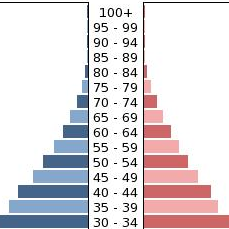International Database
International Database: World Population Estimates and Projections
Access Global Demographic Data
You can access the International Database (IDB) in several ways:
- International Database web tool for easy data display, visualization, and discovery.
- IDB Application Programming Interface (API) for querying the IDB directly or integrating into your own apps.
- Download the entire dataset.
See the latest IDB release notes page and the countries and areas page for information on the latest available data. See also our errata page.
The IDB was last updated in August 2023. The next update is planned for July 2024.
Why Does the U.S. Census Bureau Estimate and Project the World’s Population?
The IDB helps the U.S. government and the public answer fundamental questions about the people and places of our world. These data inform program planning, policymaking, educational, and research data users. We have produced these data since the 1960s, and we have published our results on census.gov since 1996. We regularly update the IDB and release the results online.
Along with the United Nations Population Division, the U.S. Census Bureau is one of the few organizations in the world that regularly estimates and projects the world’s population.
With the IDB, you can view demographic measures of over 200 countries and areas with populations of 5,000 or more, and for thousands of subnational areas (equivalent to U.S. states, counties, and townships in other countries).
For each country and area, data in the IDB include total population, population by age and sex, and demographic characteristics such as fertility, mortality, and migration. Population size (by single year of age and sex) and components of change (fertility, mortality, and migration) are available from an initial or base year through 2100 for July 1 of each calendar year. Metadata also are available describing the source data used to produce the IDB. For subnational areas, population by age and sex are available. Learn more about our subnational estimates and projections.
This level of detail provides an important foundation for tracking the demographic impacts of major events that are affecting populations around the globe, including disasters, epidemics, and pandemics.
Methodology
Our population estimates and projections are informed by hundreds of data sources around the world, including censuses, surveys, administrative records, and vital statistics. National statistical offices of other countries are one of our primary resources. We use these data sources and population evaluation techniques to produce cohort-component population projections.
The estimates and projections of vital rates, vital events, and midyear population are based on careful evaluation of census and survey results, as well as data on fertility, mortality, and international migration. Our estimates and projections also incorporate major demographic shifts from events such as disease, conflict, disasters, and other complex humanitarian crises.
We implement our projections using the Demographic Analysis and Population Projection System (DAPPS). DAPPS projects population, by single years of age, for each calendar year beyond a base year.
For more information, please read the IDB methodology statement.
U.S. Island Areas and Puerto Rico
The IDB is the official U.S. government source of population estimates and projections for the U.S. Island Areas of American Samoa, Guam, the Northern Mariana Islands, and the U.S. Virgin Islands. We also produce population projections for Puerto Rico.
Learn more about our estimates and projections for the U.S. Island Areas.
How to Use the IDB
Additional Resources
The U.S. Census Bureau Library has a collection of historical international statistical publications. Please email library@census.gov for more information.
Questions or Comments?
If you have any further questions or comments, please see our contact page.






